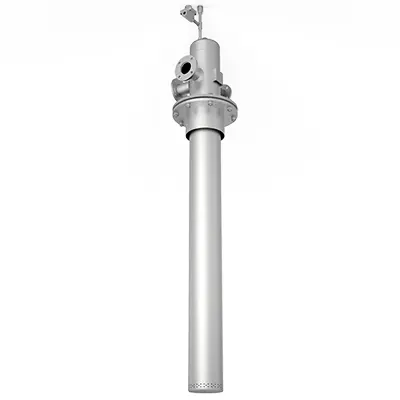Deaerator Head (FMDH)
Forbes Marshall Deaerator Head is designed to rigorously mix cold makeup water, condensate return and flash steam before they are fed into the boiler. Deaeration offers multiple benefits like increasing feedwater temperature, recovering heat from condensate and flash steam and eliminating the dissolved air and oxygen from the feedwater.
The unique design of Forbes Marshall Deaerator heads ensures thorough mixing and maximum deaeration. It is easy to install and the stainless steel construction guarantees a long and maintenance free life.
- Compact and rugged design without any moving parts ensures long and maintenance free life.
- Thoroughly engineered for maximum de-aeration and minimum losses.
Frequently Asked Questions
As per Dalton’s law, when any liquid is heated, its ability to absorb gases decreases. In the process of deaeration, the temperature of the feedwater is increased in a turbulent manner which facilitates the elimination of dissolved gases from the feedwater.
A deaerator head is a device that removes dissolved gases such as oxygen and carbon dioxide from the water used in oil and gas fired boilers.
Dissolved gases can cause corrosion and scaling in the boiler and associated piping, which can lead to reduced efficiency, equipment failure, and costly repairs.
A deaerator head works by heating the water and exposing it to steam in a low-pressure environment. This process causes the dissolved gases to be released from the water, which are then vented out of the system.

